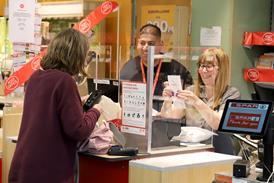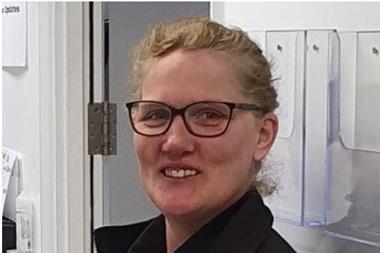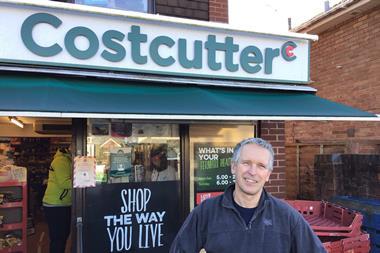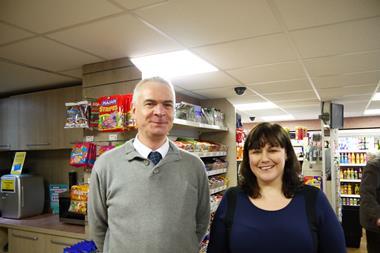Attention to detail is the key to maximising sales and profits at Ramesh & Nim Shingadia’s store in rural Sussex
Despite having been in the same store in the West Sussex village of Southwater for the past 28 years, Ramesh and Nim Shingadia have not let their strong links with the local community spill over into sentimentality.
“We have a certain footprint (the Londis-branded outlet measures 1,900 sq ft) and we don’t make an apology about what we’re here for it’s to maxmise sales and profit,” states Ramesh, as a matter of fact.
He describes the store’s daily operation as “a constant process of adding incremental sales.” But it’s the way that Ramesh and Nim go about this that is fascinating and deceptively simple.
“We boil the store down down into categories, and then analyse how much each one is generating,” he says. “The formula is all about driving footfall, and then maximising sales and profit.”
At a time when some retailers are still weighing up whether they should install an epos system, Ramesh has been using one for 18 years. And he’s something of an expert too, using his system to produce a huge category spreadsheet covering every department and its performance.
Store profile
Londis Southwater
Size: 1,900 sq ft
Staff: 30, including 10 news deliverers
Open: 7am10pm, seven days a week
Services: Bake ‘n’ Bite, home news delivery
Each week, a departmental report is compiled, with each section of the store broken down by number of customers, items purchased, and profit. Using the spreadsheet, a direct comparison can be made with the same week last year, so Ramesh can see instantly whether a particular category is underperforming.
At the same time as monitoring sales, Ramesh calculates how much each department is costing him to run by monitoring the man hours involved in managing, cleaning and restocking each section, plus any wastage. This isn’t only relevant for fresh food departments and the store’s thriving food to go counter, but is equally important for categories such as alcohol where the sales turnover is good but the products are also heavy and therefore more labour intensive to restock.
“We can work out how each section of the store is functioning, on measures such as sales per metre, or gross profit per department,” says Ramesh. “We know that if we can increase sales in each department by 5% then there will be a positive knock-on effect for the store overall.”
On the day that C-Store arrives, the Londis rep is also visiting, and it’s clear that the couple’s long-standing relationship with the symbol group is a key element in maximising the store’s performance.
“As a member of Londis, there are a number of tools available to help us,” Ramesh explains. “The group highlights new products, and we can download national planograms through the system.”
The symbol group also runs mystery shopper programmes, which give the Shingadias an objective view of their product availability and customer service.The Londis management system produces regular performance reports, such as the top 100 lines by sales value or profit.
“We are constantly pruning the slower-selling lines and adding more facings of better performers,” Ramesh says.
On the shelf, products are arranged in order of good, better and best, working from the ground upwards, with key products marked by a yellow shelf label so that staff know that there should never be a gap.
“We receive four deliveries a week, and generally work on 1.82 weeks stockholding in store. We try to minimise the stock but we all know it’s not a perfect world, so we always need a buffer to ensure availability. The number of facings depends on the popularity of the product, but ideally we’d like to put a full case on the shelf at once.”
The Londis planogram is the primary guide when deciding what products to stock, but Ramesh also uses a variety of other sources to ensure that he has the right range.
“We use a portal from SalesOut quite a lot. It compares your sales with national data and highlights lines that are missing from your store but selling well elsewhere, so it’s a great benchmarking tool. Manufacturers’ reps are also helpful, as is the trade press.”
Staff are encouraged to try out all new products in their particular departments and make suggestions, and also to listen out for customer reaction to new lines and any requests they have.
“The planograms are the templates, but there is an element of gut feel about some decisions,” continues Ramesh. “The store’s point of difference also has to be taken into account. For example, we carry a lot more newspapers and magazines than you would expect for a shop of our size, but that’s because our nearest competitor (the Co-op) only has a limited range. We also have a Bake ‘n’ Bite food to go section and that’s a major point of difference for us too.”
The daily challenge to build sales is not just about the product range good communication, community engagement and customer service all play a part.
“We like to communicate that we are an award-winning store, open long hours, and here for the community’s everyday essentials,” explains Ramesh. Visibility is vital, so the store sponsors the nearby roundabout, a school breakfast club, a local garden and the village newsletter.
The couple’s efforts to squeeze every sale out of a small store will become a little easier later this year when the premises are due to be extended. One of the main benefits of this will be a widening of the shop front, which will help the Shingadias communicate the store’s range of products and services more effectively.
In these times of increased retail competition and tightened shopper spending, growth is hard to come by. But the Southwater method of daily improvement has stood the test of time, and the store is on a sound footing for the future.











![WG-4003[58]](https://d2dyh47stel7w4.cloudfront.net/Pictures/274x183/4/5/1/353451_wg400358_6083.jpg)















1 Readers' comment